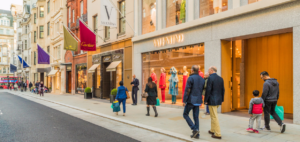Your Ultimate Guide to Famous Castles in Scotland
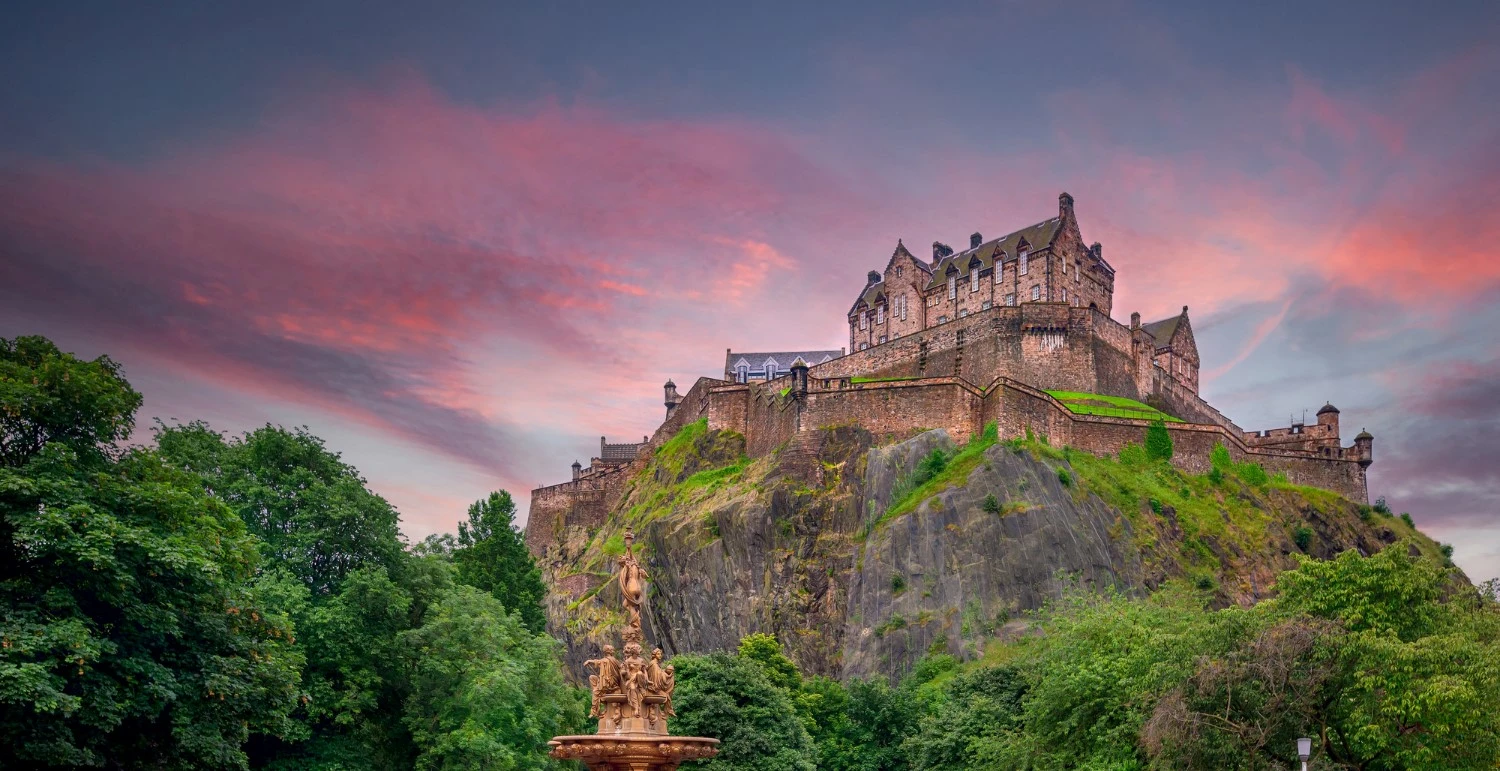
Updated On: April 15, 2024 by Ciaran Connolly
Castles are one of the prominent features of Scotland. Wherever you stay in Scotland, you will spot different fortresses with different architectural styles along the way. If you’re a history buff, you will definitely need to indulge in the rich history of these man-made wonders, where most battles of the English, the Vikings, and Scottish clans took place.
Scotland has over 1500 castles; no one knows the exact number. Their stunning views undoubtedly add to their magic. Since many of these castles are still the residences of clan descendants and royalty, they get closed during winter and the holiday season but are open to the public from April to October.
It’s tough to pick favourites from a country with a castle on every corner, but we tried to narrow it down to the top 10 castles in Scotland that never fail to awe their visitors.
1. Urquhart Castle
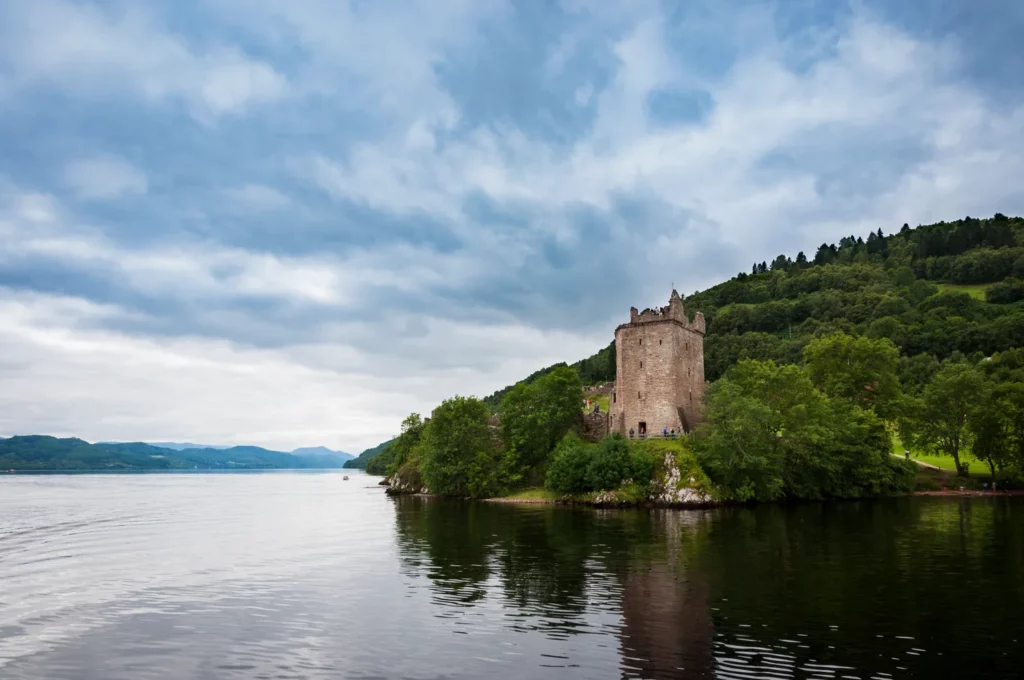
You can learn about one thousand years of history in these fascinating castle ruins. Urquhart Castle offers a taste of the Scottish Highlands, and it is certainly dramatic. With 1,000 years of drama, the site offers a peek at medieval life in Scotland through its remarkable collections of artefacts, along with incredible views over Loch Ness.
Urquhart Castle was constantly being passed between the English and Scottish control. This kind of tug-of-war lasted for three centuries, from the 14th to the 17th centuries. After the turbulent and often bloody times, the once magnificent castle was abandoned in the early 1600s and amounted to nothing but ruins.
Although the castle is pretty much in ruins, this didn’t make it any less worthy of attention from visitors from all over the world. With over half a million visitors a year, Urquhart Castle offers a fabulous backdrop of Loch Ness and the hills surrounding the area. You may even get a glimpse of Nessie!
2. Dunrobin Castle and Gardens
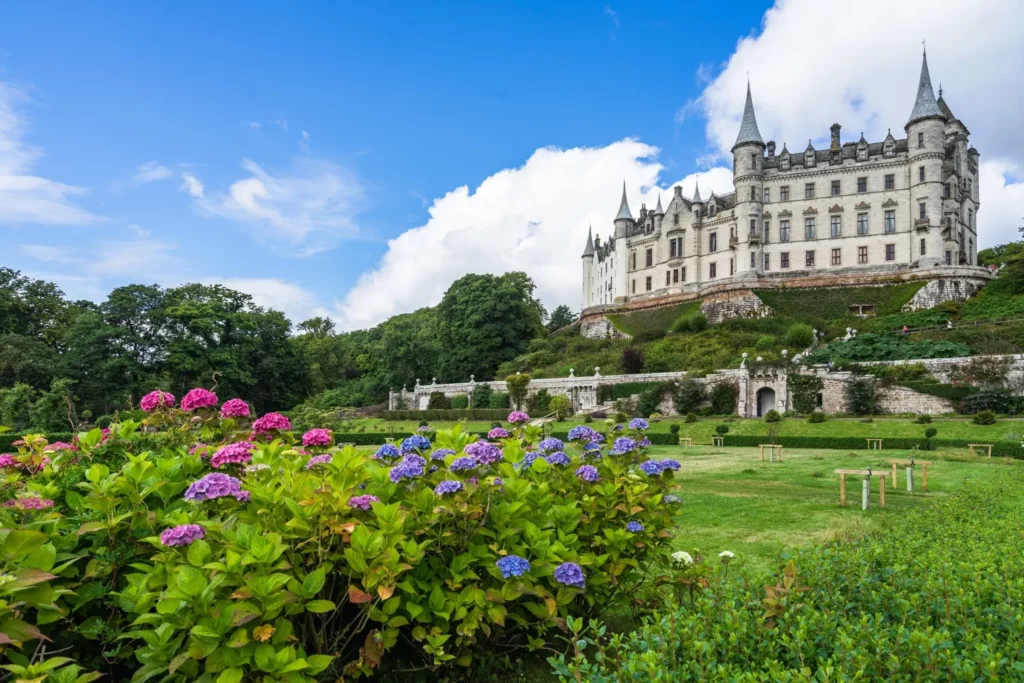
Dunrobin Castle and Gardens is the most incredible house in the north of Scotland and the largest in the Northern Highlands, overlooking the Moray Firth. Dating back to the early 1300s, the historic castle served as the residence of the Earls and, later, the Dukes of Sutherland.
The gardens and grounds will definitely awe you! Architect Sir Charles Barry, the designer of the Houses of Parliament, laid out the gardens with fabulously-looking fountains, taking inspiration from the gardens of Versailles. Although the garden has changed a little from Barry’s original design, it still retains much of it, with the constant addition of new plants.
Visiting the castle during early spring and throughout summer will offer you a colourful display of flora, ranging from tulips and perennial geraniums to dahlias and Mexican orange blossoms. Quite the fairytale, if we may say!
3. Eilean Donan Castle
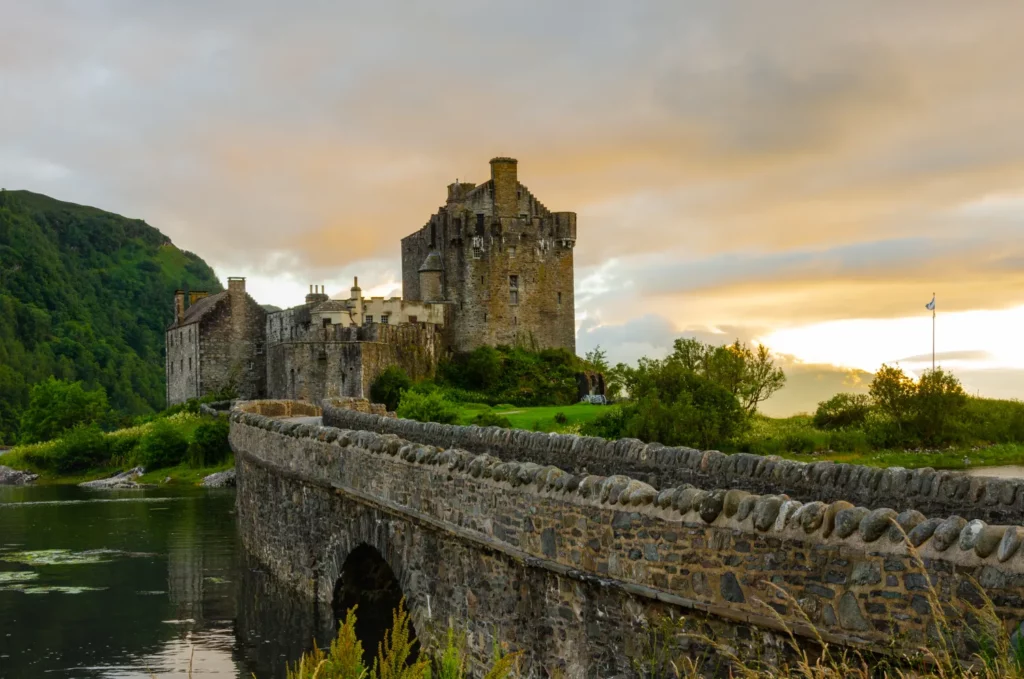
Eilean Donan lies at the intersection of three sea lochs in the western Scottish Highlands and is home to the most recognised castle in Scotland, Eilean Donan Castle. The castle is an icon of the Highlands and is the most shown on shortbread tins and calendars.
The castle’s location gained it the title of one of the most photographed castles in Scotland. The island, overlooking the Isle of Skye, is surrounded by the glorious splendour of the forested mountains of Kintail. However, the current castle wasn’t always standing tall as it is now.
The castle was built in mid 13th century and got rebuilt a few times before turning into ruins after a Jacobite uprising in 1719. It was left in this state for almost 200 years until Lieutenant Colonel John MacRae-Gilstrap bought Donan island in 1911 and started to bring back its glory. The castle was finally reopened in 1932 after 20 years of hard labour to live up to the former magnificent Eilean Donan Castle fully.
The interior rooms of the castle boast Jacobean artefacts, displays of weapons, and remarkable period furniture. Visitors can hold a romantic, one-of-a-kind wedding inside the Banqueting Hall and take it a step further to spend a honeymoon-like holiday in the Eilean Donan Cottage.
4. Stirling Castle
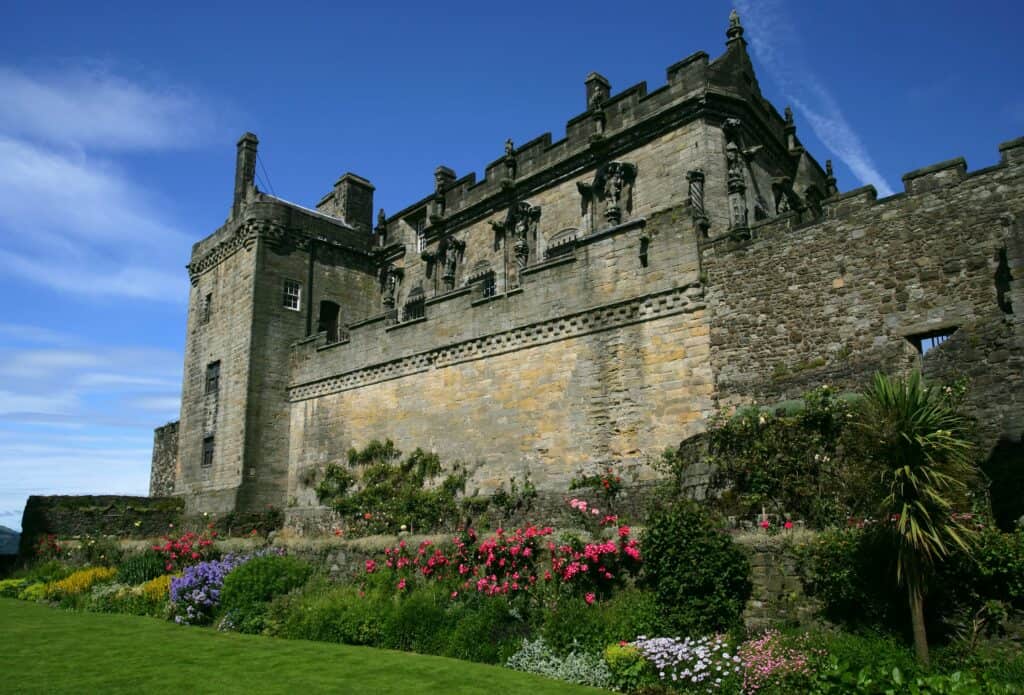
“He who holds Stirling, holds Scotland”
Stirling Castle is one of the most famous and glamorous castles in Scotland and around the world, a once-favoured residence of the Stewart kings and queens. Scottish monarchs, such as Mary, Queen of Scots, continuously built and renovated the castle from the late 14th century to the 16th. The strategic position of Stirling city, right in the heart of Scotland, made it so important and prominent in Scottish history books, consequently giving the same attributes to its castle.
One of the highlights of the castle is the Stirling Heads Gallery. The gallery holds a collection of oak medallions carved with images of monarchs, nobles, Roman emperors, and Biblical and mythological figures. These stunning art treasures once adorned the ceilings of James V’s Royal Palace, setting the castle apart from other Scottish fortresses.
Other buildings you can visit include the vast Great Hall, the Royal Chapel with an original colourful mural painting, the Great Kitchens, and King’s Old Building, home to the recently redeveloped Argyll and Sutherland Highlander Regimental Museum.
You can start or end your day with a delicious Scottish or British meal at Unicorn Cafe, along with a hot or cold drink. The cafe is child-friendly, so you can have a peaceful —and scenic— breakfast without worrying too much about your little ones.
5. Edinburgh Castle
Edinburgh Castle is among the oldest castles in Europe. Its strategic location upon a mighty rock gave it an advantage as a military base. The castle has suffered many sieges, which made it evolve its defences over hundreds of years. This has led Edinburgh Castle to be Britain’s most besieged place.
There are many exhilarating tales featuring famous Scottish figures who resided in the castle. The most famous of these iconic figures is Mary Queen of Scots, daughter of King James V of Scotland and mother of King James VI and I.
Another prominent queen of Scotland is Queen Margret, who was later made a saint. Queen Margret died in 1093 in the castle, and around 1130, her son, King David I, built a chapel in her honour. The chapel is the oldest building in Edinburgh and still hosts weddings and christenings within its walls.
One of the highlights of Edinburgh Castle is the Royal Palace, where Mary Queen of Scots’ son was born in 1566. Since he was born in such a grandiose castle, the young man became the King of Scotland at just 13 months old and later the first monarch of Scotland and England in 1603.
The Crown Room is another famous spot in Edinburgh Castle. The most famous objects in this room are the Honours of Scotland and the Stone of Destiny, both of which are of immense importance for Scottish monarchs and in Scottish history.
There are audio guides available featuring the voices of the distinguished Scottish voice of Bill Paterson, four-time Oscar nominee Saoirse Ronan, and Outlander‘s Andrew Gower.
You can indulge yourself and your companions in a true afternoon tea experience at Tea Rooms, located just in the heart of the castle in Crown Square.
6. Balmoral Castle
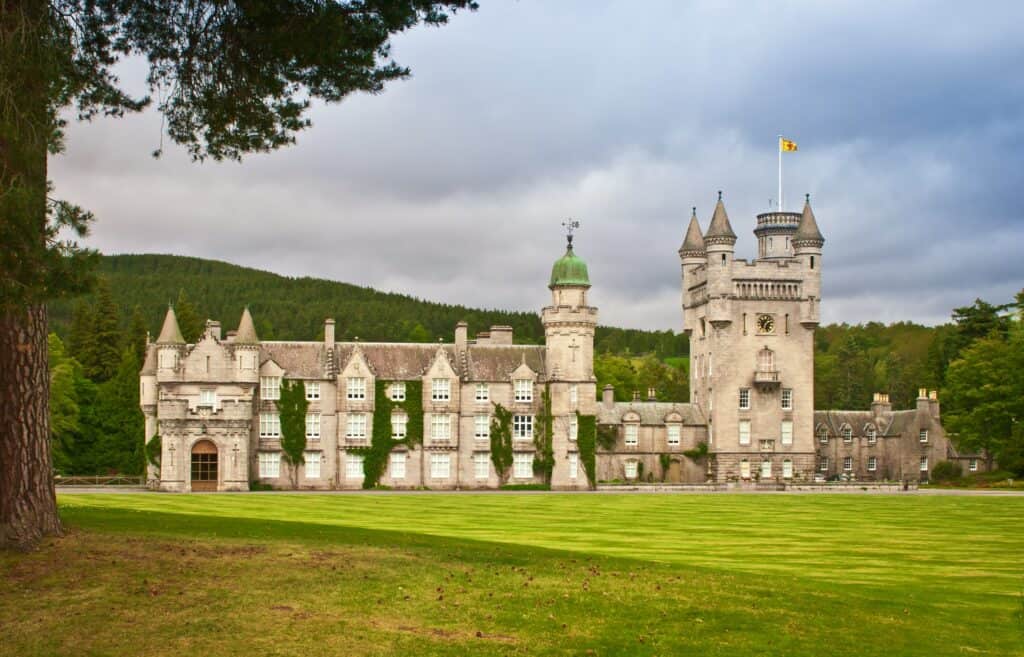
Another famous Scottish castle is Balmoral Castle, the home of the Royal Family in Scotland. The property wasn’t a royal residence until 1852, when Prince Albert gifted the castle to his wife, Queen Victoria, who fell in love with Scottish Highlands during her first visit.
Balmoral Castle was the favourite summer holiday home of the late Queen Elizabeth, who passed away peacefully within the castle’s walls on 8 September 2022. In 2016, Princess Eugenie, the granddaughter of Queen Elizabeth, expressed how much her grandmother loved the castle and how she was “the most happy there.”
One of the features of Balmoral is the Castle Ballroom, the largest room in the castle. The ballroom is still used to this day by the Royal Family and is used for Ghillies Ball, which has taken place almost every year since Queen Victoria’s reign.
Another famous area is Garden Cottage, where Queen Victoria used to relax and write her diaries. Balmoral’s impressive gardens contain several Victorian glasshouses and a conservatory displaying different floral pot plants year-round.
7. Blair Castle
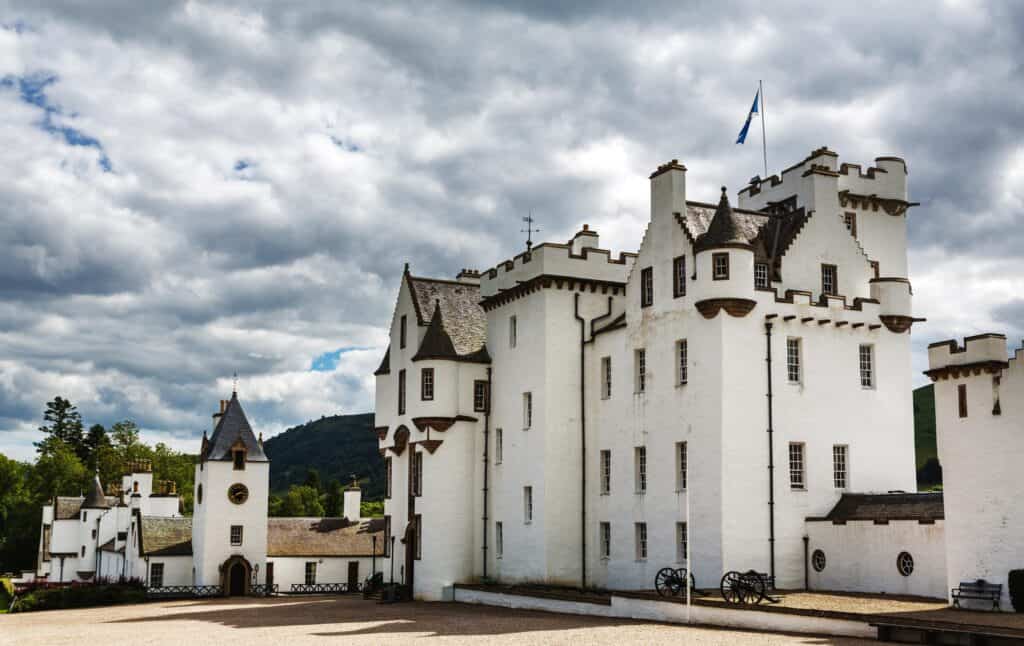
Many castles display the long history of Scotland, but Blair Castle truly captures the essence of Scottish history, offering insights into both peaceful and turbulent times. Over 19 generations of the Atholl family have resided within the castle’s walls. In the 1860s/70s, the 7th Atholl Duke commissioned architects David Bryce and William Burne to transform the Georgian mansion into a Victorian castle, following the then-popular Scottish Baronial architecture style. Inside the castle, you can trace down the history and interests of the dukes through the furniture, paintings, collections of china, and other treasures.
Highlights of Blair Castle include the Entrance Hall, which has a display of weapons that were used at the Battle of Culloden, the Georgian Dining Room (previously the Great Hall by the 3rd Earl) that still retains Thomas Clayton’s plasterwork, and the Drawing Room.
The castle also features a Tapestry Room. The room is lined with the Mortlake Tapestries, which were discovered in Paris, purchased by the 1st Duke, and later brought back to Blair Castle.
The astounding Ballroom of Blair Castle should be at the top of your list of areas to explore. The 7th Duke commissioned the ballroom for the Atholl Highlanders, Europe‘s last private army, to use. It is still used as a venue for weddings and hosts many private dinners, Highland balls, and the Atholl Highlanders’ ball held annually.
8. Inveraray Castle
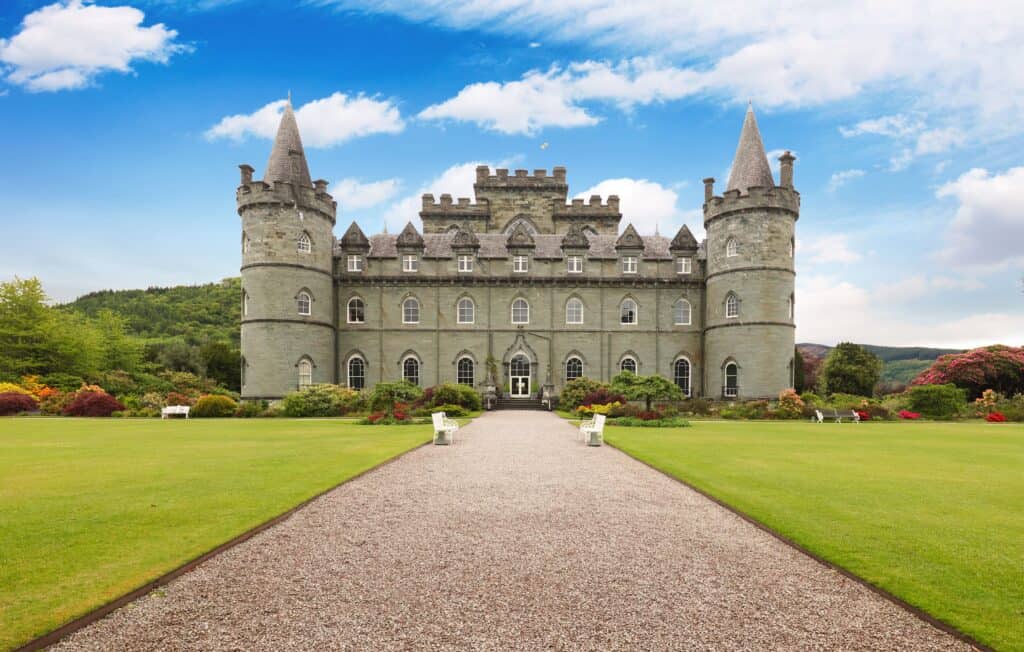
Situated on the shores of Loch Fyne in the West Scottish Highlands is the majestic —and rather romantic— Inveraray Castle. It is one of the most splendid fairytale-looking castles in Scotland and is still, in fact, a family home. Although it is the seat of the Clan Campbell and is still in use by the Dukes of Argyll, many sections of the magnificent castle receive tons of visitors yearly, and, of course, they are separate from the private part of the home.
Inverary Castle‘s exterior is quite captivating. The castle was designed by architects Roger Morris and William Adam, who got inspired by only a sketch of the architect of Blenheim Palace and Castle Howard in England, Vanbrugh. The design blends up modern, baroque, Palladian, and Gothic styles so skillfully that it was the first of its kind.
The ground floor of Inverary Castle gives a quick glimpse at Scottish history and the role of the Campbell Clan in shaping Britain’s history. The new design retained a similar concept Vanbrugh used for the remarkable collection of the armoury in Castle Howard and Blenheim Palace, resulting in the present-day Armoury Hall. The next stop from it is the State Dining Hall, with extravagant decorations, namely the 1784 painting by two French artists Girard and Guinand.
Other highlights include the modest Entrance Hall, the exquisite Parisian-styled Tapestry Drawing Room, and the China Turret that displays a vast and unique collection of Oriental and European porcelain, including the 18th-century unique Japanese Arita ware.
Many other sections of the castle are worth exploring and marvelling at their beauties, so make sure you tour for at least an hour to discover all the hidden treasures.
9. Dunnottar Castle
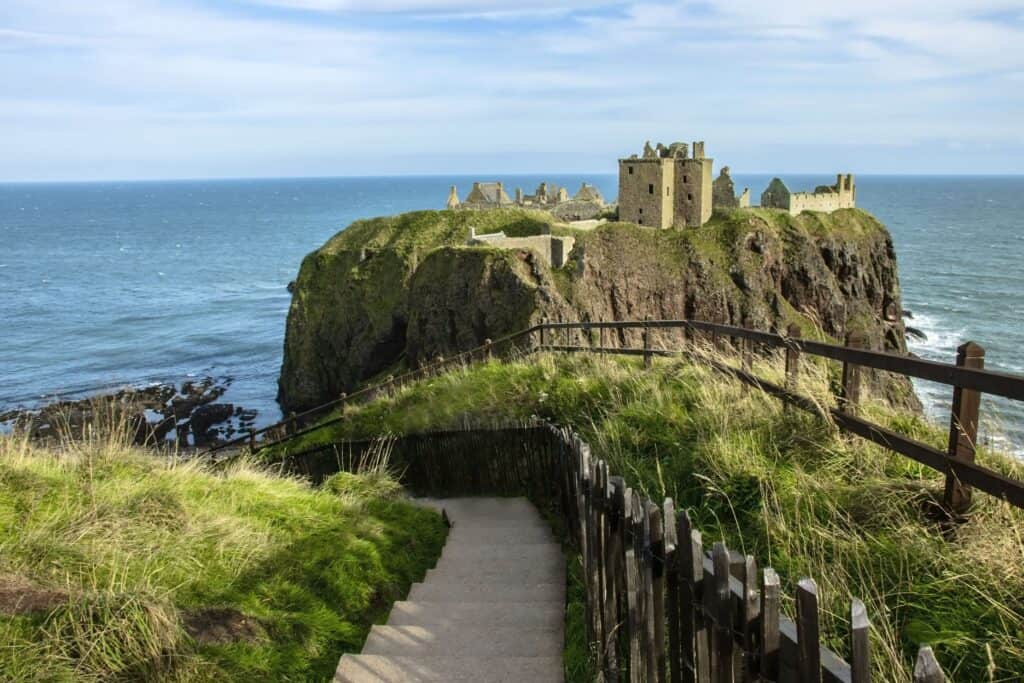
One of the most evocative and dramatic ‘castles’ in Scotland is the cliff-top ruins of Dunnottar Castle, a once impregnable fortress of one of the past, most powerful families in Scotland’s history, the Earls Marischal. It is where the Vikings killed King Donald II of Scotland, William Wallace fought the English to take the castle back under Scottish control, and where the Honours of Scotland were kept safe during the Parliamentary Army’s invasion led by Oliver Cromwell.
Although the castle is ruinous, you can still trace its rich history in the remaining ruins, including the remains of the chapel William Wishart, Bishop of St Andrews, built, the Tower House, and the Keep. If you are daring enough, you can visit the Whig’s Vault and see a glimpse of what the castle would have looked like through the restored Drawing Room.
10. Duart Castle
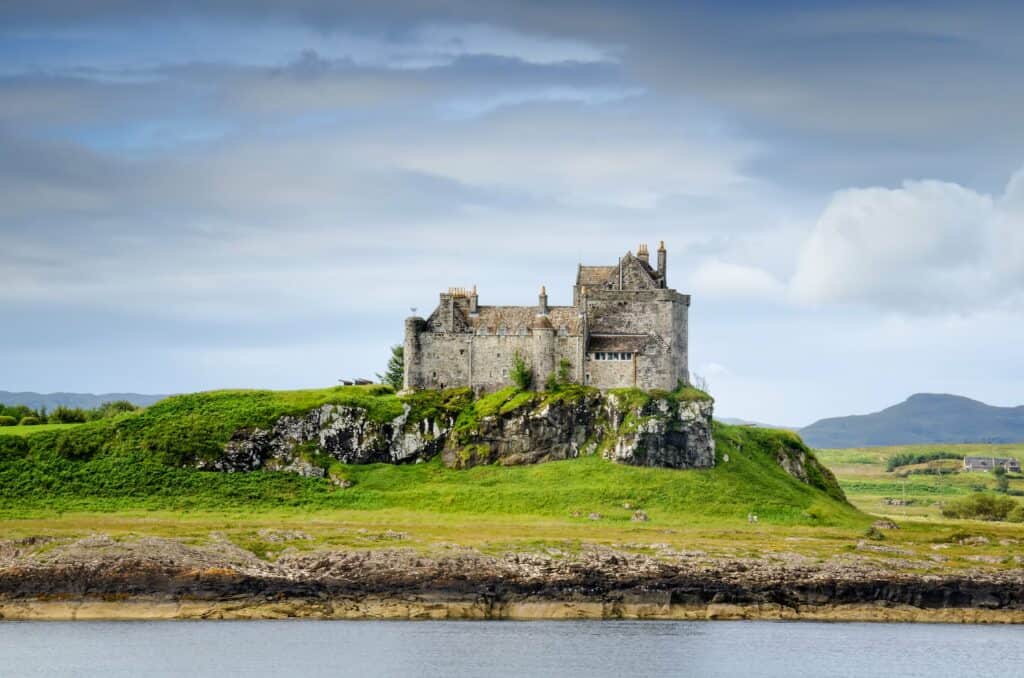
Duart Castle is one of the last standing private Clan Castles in Scotland, belonging to the Macleans, one of the oldest clans in Scotland. Like Eilian Donan Castle, Duart was destroyed by the English in 1756, although it dates back to the 13th century. The Macleans rebuilt it as a home in 1911, and it has remained their residence for centuries.
You can explore the history of the Macleans in the last 700 years through family portraits hanging on the walls of the Great Hall, military uniforms and dresses from 1750 in the State Bedroom and Dressing Rooms, and memorabilia dedicated to the Scouting Association and their connection to the Macleans in the Clan Exhibition.
If you want to learn about the clan’s history in a more seasoned way, then the Tearoom is waiting for you, offering the best of Scottish and locally sourced Isle of Mull produce. For the more daring and braver visitors, the ancient 13th-century Keep and the ghostly dungeons will offer you a well-deserved spine-chilling experience.
The UK has many glorious castles to tell of its long and rich history. Although Wales has gained the nickname of the ‘land of castles,’ Scotland competes with it, having many picturesque castles dotting the corners of the country. To take your trip even a step further and live the fairytale dream, you can rent a castle in the UK. You’d be surprised how many of the magnificent castles can be rented!




